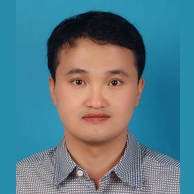Recent Study on Seismic Performance of Building Structures
A special issue of Buildings (ISSN 2075-5309). This special issue belongs to the section "Building Structures".
Deadline for manuscript submissions: 31 May 2024 | Viewed by 4190
Special Issue Editors
Interests: seismic performance and rehabilitation of RC structures; durability of RC structures; new building materials and structural systems
Special Issues, Collections and Topics in MDPI journals
Interests: engineering structure performance evaluation; computing in civil engineering and earthquake engineering; strengthening and retrofitting of structures; reinforced and prestressed concrete structure; smart and advanced materials
Interests: engineering structure performance evaluation; computing in civil engineering and earthquake engineering; strengthening and retrofitting of structures; reinforced and prestressed concrete structure; smart and advanced materials
Interests: RC shear walls; seismic performance; application research of high-performance building materials
Special Issues, Collections and Topics in MDPI journals
Special Issue Information
Dear Colleagues,
Earthquakes are one of the most destructive natural disasters and can cause large-scale loss of life and property. The buildings in regions with high seismic activity require careful design as they are more susceptible to earthquakes. The performance-based seismic design could effectively control the seismic performance of structures during earthquakes and could limit the damage and loss of the structures. Therefore, great attention has been paid to studying the seismic performance of building structures. The main aim of this Special Issue is to expound some key problems regarding the main theories, research contents and differences in current performance-based seismic design.
We welcome contributions that advance the state of the art of the addressed topics, including but not limited to the following fields:
- Seismic assessment of building structures;
- Computing in earthquake engineering;
- Methods of seismic analysis;
- Seismic risk analysis;
- Engineering structure performance evaluation;
- Strengthening and retrofitting of structures;
- Experimental studies;
- Analysis of case studies.
Dr. Qin Zhang
Dr. Weiqing Zhu
Dr. Yantai Zhang
Dr. Xiangyong Ni
Guest Editors
Manuscript Submission Information
Manuscripts should be submitted online at www.mdpi.com by registering and logging in to this website. Once you are registered, click here to go to the submission form. Manuscripts can be submitted until the deadline. All submissions that pass pre-check are peer-reviewed. Accepted papers will be published continuously in the journal (as soon as accepted) and will be listed together on the special issue website. Research articles, review articles as well as short communications are invited. For planned papers, a title and short abstract (about 100 words) can be sent to the Editorial Office for announcement on this website.
Submitted manuscripts should not have been published previously, nor be under consideration for publication elsewhere (except conference proceedings papers). All manuscripts are thoroughly refereed through a single-blind peer-review process. A guide for authors and other relevant information for submission of manuscripts is available on the Instructions for Authors page. Buildings is an international peer-reviewed open access monthly journal published by MDPI.
Please visit the Instructions for Authors page before submitting a manuscript. The Article Processing Charge (APC) for publication in this open access journal is 2600 CHF (Swiss Francs). Submitted papers should be well formatted and use good English. Authors may use MDPI's English editing service prior to publication or during author revisions.
Keywords
- earthquake engineering
- seismic performance
- seismic design
- strengthening
- retrofitting
- computing








